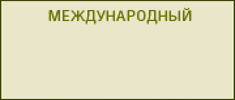List articles
|
The article is devoted to the tactical level of competitive behavior of firms. Author postulates firms
competitive tactics as a set of competitive action, grouped in the tactical models, and actually
implemented in tactical operations against certain tactical competitors in a short period of time.
The author emphasizes that different tactical models implement some competitive strategies
of firms, and offers a matrix of types of competitive strategies of market participants and types
of tactical models of competitive action.
The author shows, that the classification of tactical models of competitive actions in general should
follow the classification of types of competitive action (offensive, defensive, combination). So the
author identifies tactical model: front and flank attack; deaf, valid and preventive defense; counterattack;
guerrilla warfare; retreat; rational self isolation; non-conflict; consent; joint defense and joint
offence; and tactical maneuvers.
The author understands the tactical maneuvers as a combination of competitive actions of market
participants, who considered making any changes in the realization of tactical operations.
The article consistently describes and characterizes all offered types of tactical models of competitive
action.
Continue...
|
|
|
This article brings out and summarizes approaches to definition of market product boundaries for
the purpose of antitrust law enforcement in accordance with the relationship between the main
and derivative products. Following factors are discussed: price of the derivate product in absolute
terms and in comparison with the main product price; probability of the derivative product sale to
consumer under period of the main product use; the main product buyers structure; information
on durables post-sale service conditions availability. It is shown applicability of transaction cost
economics approach to discuss issues relating antitrust and contracting using such transaction
features as bounded rationality, opportunistic behavior and assets specificity. The reasons to mitigate
the mode of antitrust enforcement in aftermarkets are exposed: research and development
expenditures, reputation effects for the main product producer who controls aftermarket, increasing
return to scale in aftermarket.,The article provides the assessment of the results of Russian
antimonopoly policy and competition advocacy in related markets characterized by «main product-derivative product» relationship. Special attention is devoted to compliance practices of manufacturers
and dealers in auto industry from the perspective of competition support in aftermarkets.
The article offers policy implications for the antitrust law enforcement in aftermarkets in Russia.
Continue...
|
|
|
The author studied violations of the antimonopoly law on the gas sector market. FAS has an increased
focus on this market; however, the number of violations keeps going up, constituting
a significant share of violations at the industry level. On the gas market in 2014 accounted for 6.7%
of all applications, 3.5% of cases and 2.5% of issued regulations. The paper outlines the results of
the author’s analysis of violations on the gas market by types and Clauses — abuse of dominant
position (96.3% of all breaches in this market), agreements and unfair competition.
Continue...
The increase in cases of FAS in the statements of individuals or in respect of individuals tends to increase, which, according to the author, is a negative trend. The circle of subjects of legal relations is shifted from the control of the illegal activities in the area of restrictive practices toward consumer protection. Only in the last six years the percentage of physical the applicants amounted to 45.7% and the number of the violations against physical and legal persons are almost equal (respectively to 48.6 and 51.4%). In General, this diagnose the situation on the gas market, institutional, technological, tariff and other problems, the solution of which consumers can’t find in the local governments or other authorities, and I appeal to the Antimonopoly authority. The features of the specifics of processing cases by the antimonopoly authority, the structure of violations and comparative analysis by Clauses of violation. Based on statistical data on violations committed in 2007 – 2014, content-analysis of FAS official web-site as well as the protocols of the sessions of the Expert Council on developing competition on the gas market, the author highlights the key aspects and problem areas for gas market performance in terms of compliance with the competition law. Systematized the most frequently repeated reasons and painted a portrait of the typical violations. The greatest number of problems occur in the markets associated with the distribution of gas through networks of low and medium pressure and supply to final customers. |
|
|
In article legal grounds of carrying out selection of persons for rendering services are analysed on
movement and (or) storage of the detained vehicles. The judicial is considered and administrative
practice on consideration of questions of free selection of persons for rendering services for movement
and (or) storage of the detained vehicles for lack of ensuring equal access for other participants
of the market. Practice of certain subjects of the Russian Federation on selection of persons
for rendering services for movement and (or) storage of the detained vehicles is investigated,
the main approaches, similarities and distinctions between them are noted, and also examples
of concrete provisions of such orders containing requirements of discrimination (anticompetitive)
character which can bring are allocated to restriction, elimination, prevention of the competition
among the persons having intention and possibility of participation in these selections.
The author formulated prerequisites and the main approaches to expansion of a circle of people
which could participate in selections on the right of movement and (or) storage of the detained
vehicles, and also to possibility of realization of the right of the driver — the buyer (consumer)
“constrainedly“ on a choice of the tow pounds.
Examples of actions of authorities which not only can lead to violations of the antitrust law are
given, but also directly led to such violations.
Continue...
|
|
|
Non-competitive behavior of auction participants is a serious problem, leading to losses of economic
efficiency of projects where the mechanism is used. Such violations are quite common in
Russia and are traditionally in the focus of attention of antitrust authority. In practice, the prosecution
of competition-restricting agreements is often problematic, given the diversity of their forms
and underdeveloped standards of proof. This, in turn, weakens the deterrent effect of antitrust
prohibitions.
The purpose of the article is to assess the role of the parameters of the auctions and standards of
proof applied in the Russian antitrust investigations which they play in opposition to the conclusion
of the competition-restricting agreements in competitive bidding. To achieve this goal in this study
we generalize the results of theoretical studies devoted to the analysis of collusion in auctions.
We also analyze the most common violations of the antitrust law by auction participants found in
the Russian practice. The case study method is used to identify the parameters of the auctions,
facilitating entering into competition-restricting agreements, as well as problematic issues related
to attracting bidders to justice for anti-competitive behaviour.
Continue...
|
|
|
In recent studies of business and management, social entrepreneurship is one of the most actively
studied areas. The following article provides analysis of major studies of social entrepreneurship
concepts published in scientific magazines from 1998 up to 2014. The research also provides
features of social organization and characteristics of social entrepreneur. The concept of social
entrepreneurship still poorly studied. That is proved by variety of theoretical studies and by limited
number of empirical researches in this area. The main factor that differs social entrepreneurship
from traditional one is the ability of entrepreneurs to use special methods. Social entrepreneurship
can be defined as; a model of political transformation, process of activity, entrepreneurial behavior
of the social initiatives’ beginner who creates social organization and who is interested in tangible
results. The research of social entrepreneur defined his ability to find the possibilities in entrepreneurial
activities and use resources for achieving social mission and fixing social problems.
This ability can be aimed to self-realization of an individual, organization of charity, social help,
or result orientated. The main types of social entrepreneur organizations are traditional noncommercial
organizations, noncommercial social-oriented firms, hybrid organizations, commercial
social-oriented firms. The research shows that Russian practice does not have commercial and
noncommercial social-orientated firms and hybrid organizations. As the result, research provides
specific major concepts of social entrepreneurship, defined characteristics and nuances of social
entrepreneurship, and analysis of social entrepreneurs’ types and intentions.
Continue...
|



